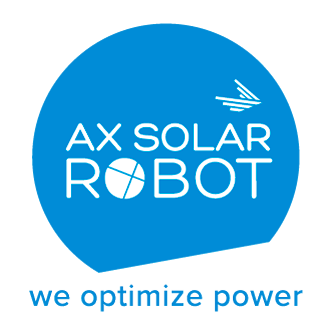In order to optimize the production of a solar power plant, it is essential to take into account both the orientation (east/west/north/south) and the inclination (slope, expressed in % or °) of the installation, in order to take maximum advantage of the available irradiation, which will vary according to location from the north to the south of France, from 800kWh/kWp to 1500kWh/kWp.
A 150kWp rated installation, for example, has a potential electricity production of around 120 to 225 MWh per year, but only under certain conditions of orientation (the direction in which the panels are installed) and inclination (and soiling, of course!):
As France is in the northern hemisphere, the ideal orientation is towards the south (for a fixed structure, see below), with possible variations towards the west or east.
As far as inclination is concerned, the sun’s rays will rise between 17 and 64° above the horizon depending on the season (on average), which means that the ideal inclination – for fixed structures once again – is between 35 and 40°.
In the field, we can distinguish between several different situations in terms of module orientation and inclination (indicative figures):
Ground-mounted PV plants
| PV fields – 1 axis tracker | PV fields – fixed | 2-axis tracker | floating | Vertical PV | |
| fixed | N/A | South 10-30° | N/A | South5-25° | Y/NVertical/90° angle |
| tracker | E/0+/-55° | N/A | I/O | Y/N+/-15° | N/A |
| comments | shading by rows or natural elements to be taken into account in plant design | ||||
PV plants on roofs / near-roof structures
| agricultural roofing | industrial roofing | parking shade | greenhouses | |
| nine | orientation & inclination according to design & structural constraints | |||
| existing | South or E/W if possible5-40° | South or E/W if possible0-30° | South or E/W if possible5-15° | South or E/W if possible20-30° |
| comments | due to structural and height imperatives, slopes are generally shallow | |||
Note: the slope has an impact on the cleaning methods that can be used to maintain solar power plants. The steeper the slope, the more complex it will be to use remote-controlled robots on caterpillar tracks (link to Rider M/S page), the limit being around 25° or 47% (also depending on other factors such as outside temperature and type of soiling). For frequent maintenance without human intervention on large structures with no slope limit, permanent solutions can be installed.
For ground-mounted plants, the robots mounted on the frames allow cleaning to be carried out regardless of the inclination of the modules, even without stopping the tracking mode.



